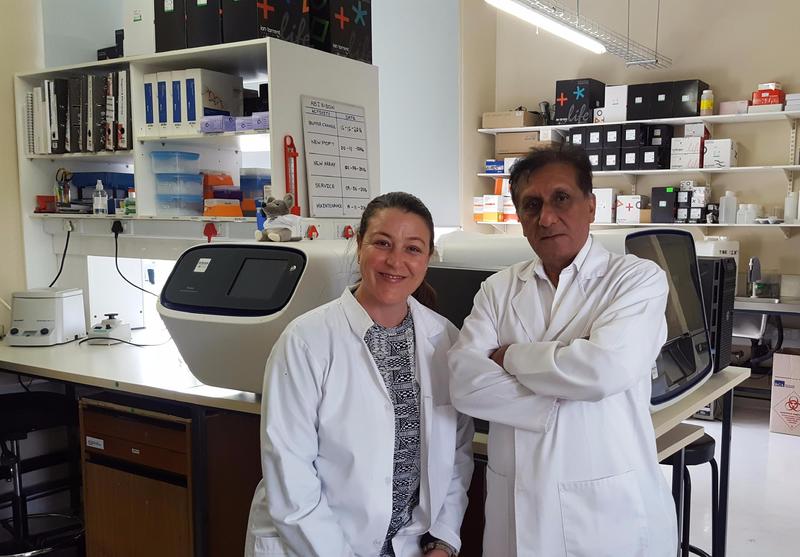Novel blindness gene identified
22 June 2017 | Story Supplied. Photo Stephanie Julius.
The novel gene was identified by researchers from South Africa, Israel, the Netherlands and the United States. IDH3A is the third novel gene identified by UCT’s Division of Human Genetics, in collaboration with their international partners.
IDH3A is important in all human tissues, but its mutations result only in degenerative retinal disease (dystrophy), the cause of which is not yet understood, said Professor Raj Ramesar, head of the Division of Human Genetics. The findings, published in Ophthalmology, report one family from South Africa, two families from the Netherlands and one from Israel in which RP patients carry mutations in IDH3A.
Extensive collaboration
In the past 25 years, more than 80 genes have been associated with RP and together they explain approximately 70% of all cases. Novel identified genes such as IDH3A are typically found in less than 1% of the RP patients. This means that they can be identified only through extensive collaborations between RP researchers worldwide.
UCT’s Division of Human Genetics has been researching inherited retinal disorders (IRD) such as RP in southern Africa since 1989. Working closely with ophthalmologists around the country and the lay support group Retina South Africa (which has funded the project since its inception), the division has recruited over 3 300 participants from 1 500 families. Major milestones of the UCT research group have included the previous identification of two novel RP genes: PRPF8 in 2001 and CA4 in 2004.
“All of the research on inherited retinal disorders aims to understand the disease mechanism that leads to visual loss, with the ultimate objective of halting progression of disease and creating precise molecular interventions,” said Ramesar.
One of the co-authors of the Ophthalmology paper, PhD student Lisa Roberts, focused on identifying the genes and mutations causing inherited vision loss in indigenous African families. In 2014 Roberts performed whole exome sequencing in the Neurobiology Neurodegeneration and Repair Laboratory (NNRL) at the National Eye Institute in the US, under the guidance of her co-supervisor, Dr Anand Swaroop, and his research team.
Next-generation technique
Whole exome sequencing is a next-generation sequencing technique that allows the simultaneous sequencing of all the exons (the coding portions of genes) in the genome.
“Analysing the data generated by this experiment was challenging, particularly as indigenous Africans display vast genetic diversity,” said Roberts. “Millions of DNA sequence variants were detected, which had to be filtered and evaluated to pinpoint the exact mutations causing blindness in the families I was studying.”
After interrogating all the known IRD genes, several of the families remained ‘unresolved’. Roberts then examined the genetic sequence data from these families, looking for variants in a list of candidate genes (including IDH3A), published by the European Retinal Disease Consortium.
“The identification of multiple families from around the world with mutations in the same gene is strong supporting evidence when trying to link new genes to diseases,” said Roberts.
As well as acknowledging other role players, Ramesar paid tribute to the role of Johannesburg ophthalmologist Dr Gratia Fischer, who provided details of the unusual clinical presentation of the South African individuals with IDH3A mutation.
Following Roberts’s work in the US, the Ramesar Lab in the Institute of Infectious Disease and Molecular Medicine (IDM) has acquired a next-generation sequencing facility (a high throughput facility generating big data) that allows high-throughput sequencing like the whole exome sequencing.
 This work is licensed under a Creative Commons Attribution-NoDerivatives 4.0 International License.
This work is licensed under a Creative Commons Attribution-NoDerivatives 4.0 International License.
Please view the republishing articles page for more information.










